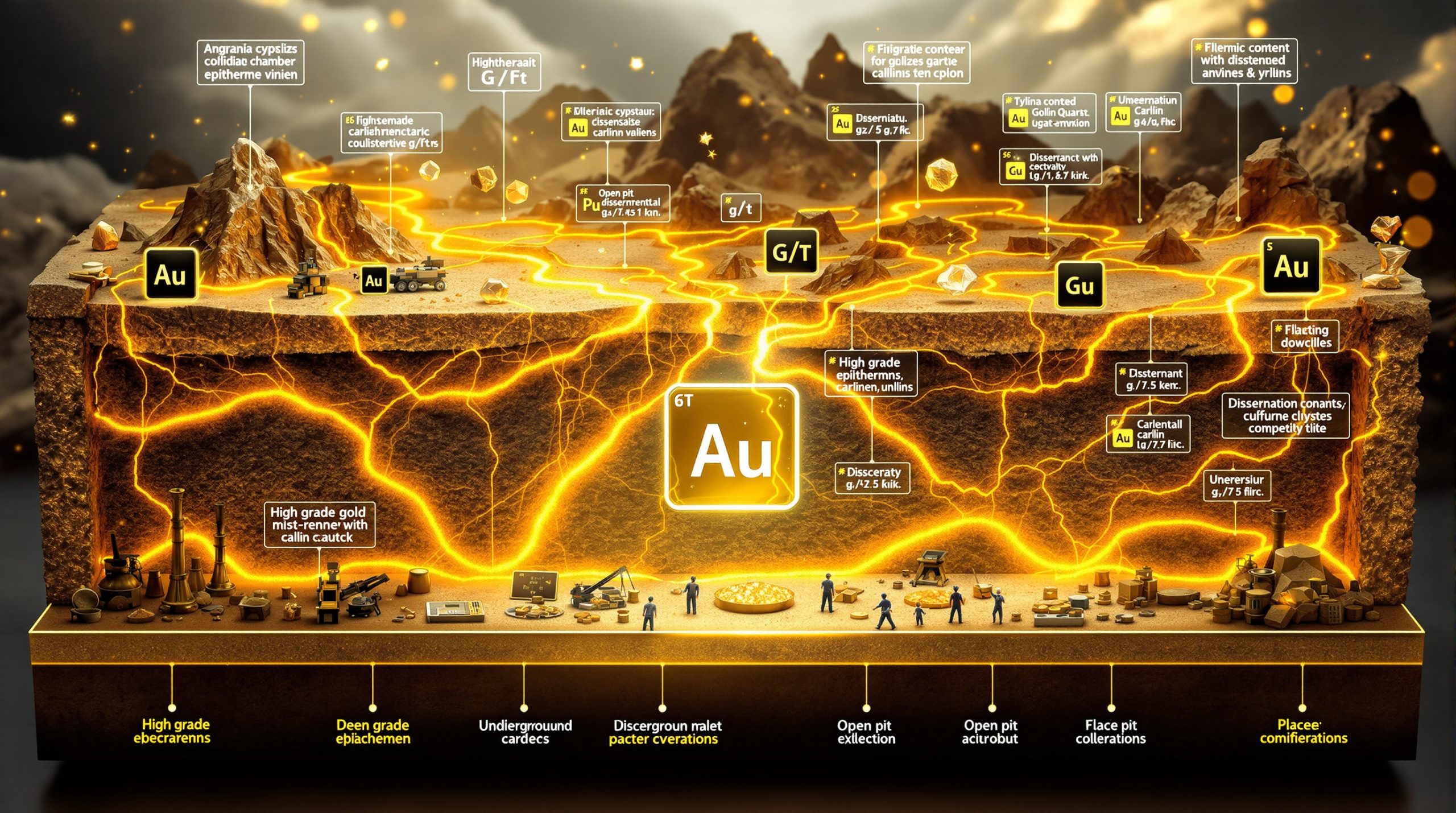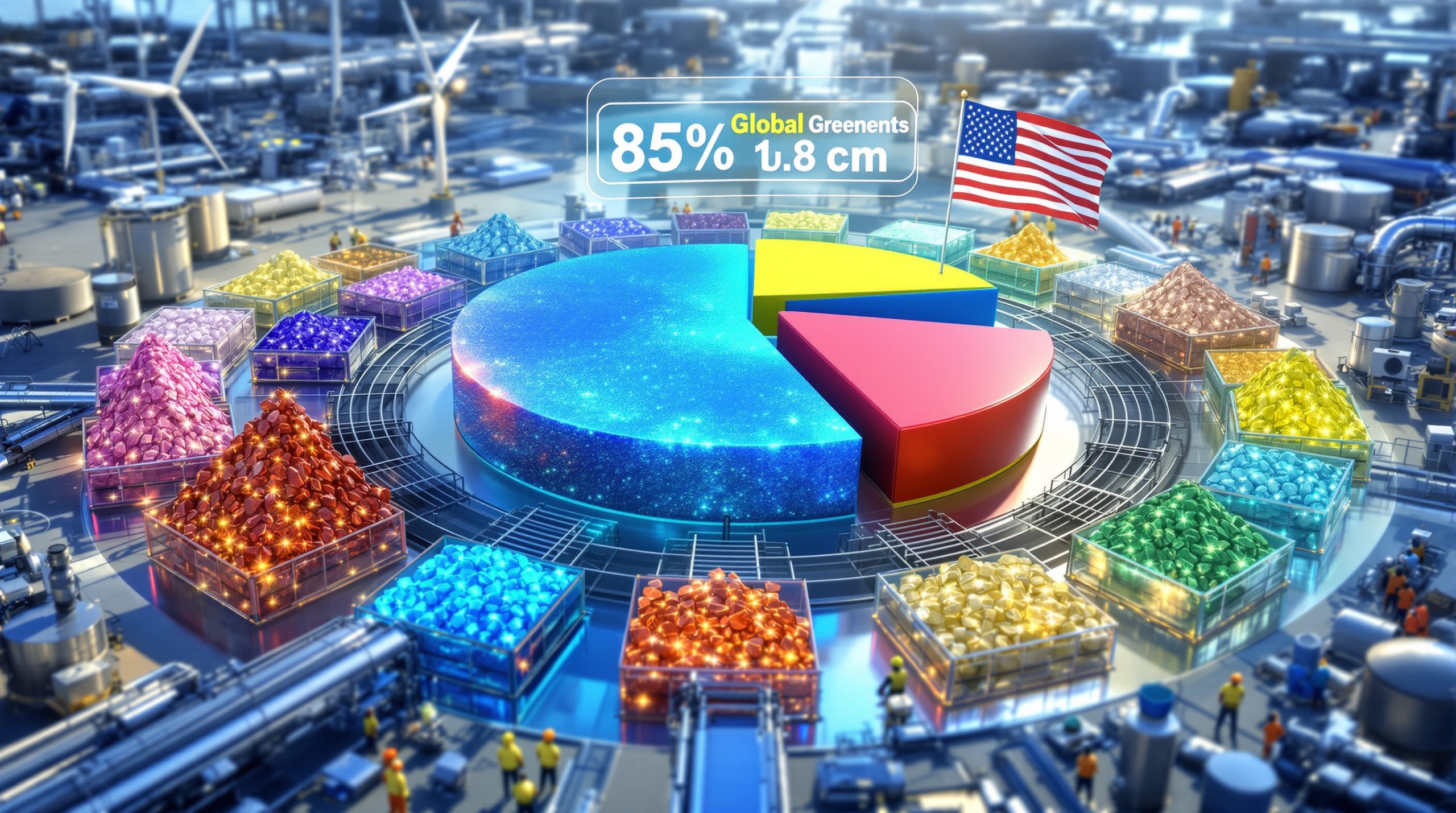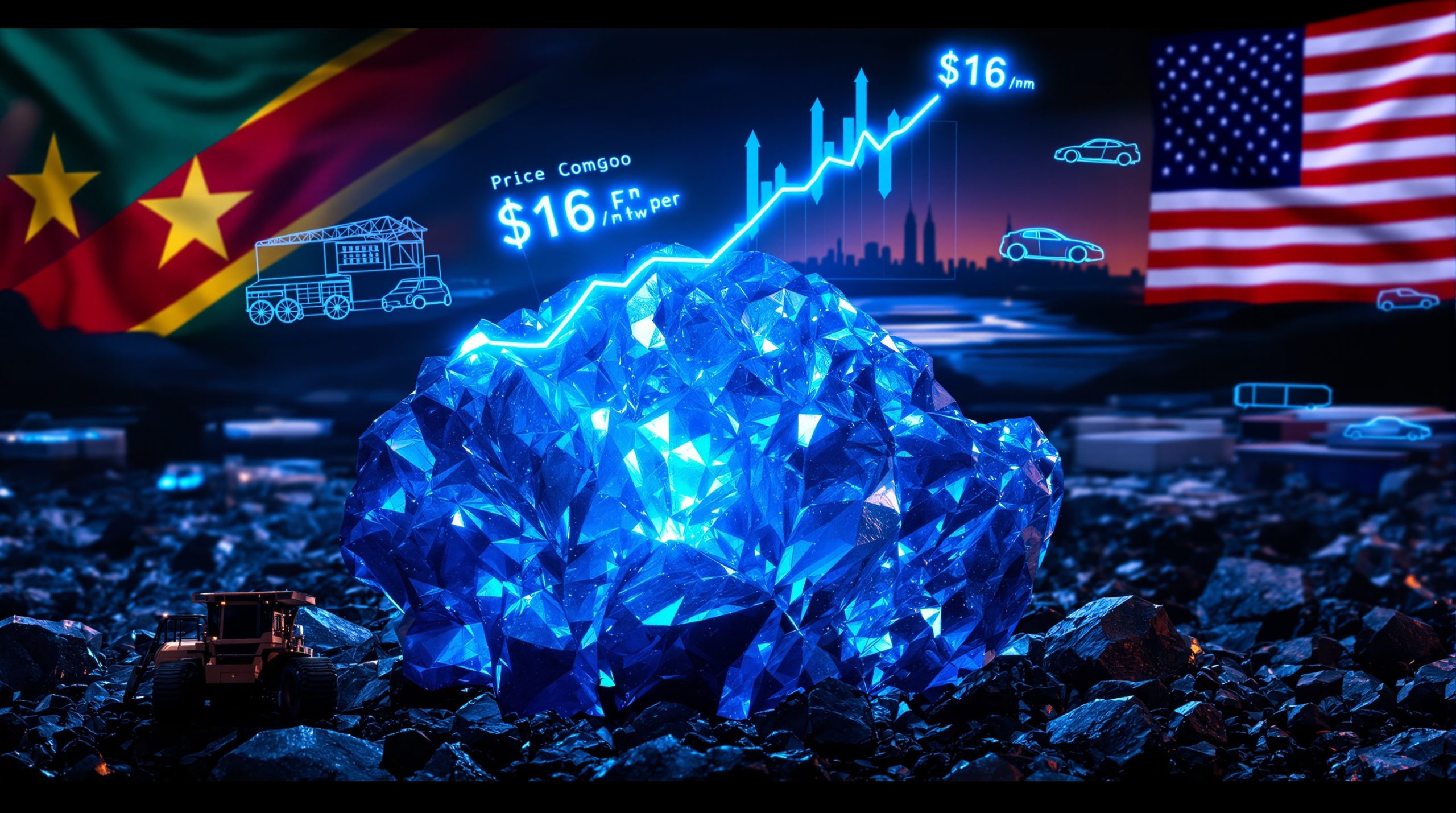Understanding the Current Market Dynamics
The interplay between macroeconomic policy uncertainty and high-grade NPI (nickel pig iron) prices has become increasingly significant in today's metals market. As stainless steel producers navigate challenging conditions, the entire nickel supply chain faces pressure from both market fundamentals and broader economic forces.
Stainless Steel Market Conditions
Despite recent rebounds in stainless steel futures, with the SS 2508 contract reaching 12,825 yuan/mt, fundamental market conditions remain challenging for producers and traders alike. The traditional consumption off-season, exacerbated by high summer temperatures across major manufacturing regions, has significantly weakened downstream demand.
Inventory pressure continues to mount across multiple points in the supply chain. This accumulation spans in-plant inventory, front-end warehouses, and social inventory, creating a bottleneck that restricts market fluidity. According to the latest data from Shanghai Metals Market (SMM), stainless steel social inventory increased 1.31% week-over-week to 990,800 metric tons as of July 10, 2025—a clear indicator of persistent demand weakness.
"The combination of seasonal factors and high inventory levels has created a perfect storm for stainless steel producers, with direct implications for NPI demand." — SMM Nickel Morning Meeting Summary, July 11, 2025
Macroeconomic Policy Factors
The uncertainty surrounding monetary policy decisions by major central banks, particularly the US Federal Reserve, has cast a shadow over commodity markets. Minutes from the Fed's June meeting revealed deeply divided opinions among officials regarding interest rate trajectories. Three distinct positions have emerged:
- Officials favoring cuts within 2025 but opposing July action
- Officials rejecting any 2025 cuts altogether
- Officials supporting immediate rate reduction
This division stems from differing assessments of inflation pressures and economic growth prospects, with particular disagreement about how US economy and tariffs might impact inflation metrics.
Adding another layer of complexity, high-level US-China trade strategies discussions are scheduled for early August. The US delegation will include Commerce Secretary Ruthnick, Treasury Secretary Scott Besant, and Trade Representative Jamison Greer—signaling the importance both nations place on resolving trade tensions. However, concerns about potential tariff implementations continue to drive risk-averse sentiment throughout commodity markets, including nickel.
What's Happening with High-Grade NPI Prices?
The market for high-grade nickel pig iron (NPI) sits at a critical juncture, influenced by both upstream raw material dynamics and downstream demand patterns. As a key input for stainless steel production, NPI prices serve as an important barometer for the broader nickel industry.
Current Price Trends
High-grade NPI (8-12% nickel content) prices have been holding at 905 yuan/mtu (ex-factory, tax included) as of July 10, 2025. However, these prices face increasing downward pressure as stainless steel producers reduce procurement volumes amid weakening end-user demand. The traditional support mechanism—production costs—has also begun to erode as Indonesian saprolite ore premiums have softened slightly.
The price stability observed in recent weeks masks underlying tensions in the market, as producers attempt to maintain margins while buyers seek discounts. This standoff has created a temporarily stable but fundamentally fragile pricing environment.
Supply-Side Factors
The supply landscape for high-grade NPI reveals a tale of two production centers with distinct challenges:
- Chinese domestic production remains constrained by high Philippine nickel ore prices, with CIF prices for 1.3% nickel content ore at $45-47/wmt
- Indonesian smelters are experiencing some cost relief as saprolite ore premiums weaken, though many still face expanded losses
Production cutbacks appear increasingly likely as financial pressures mount. Several Indonesian smelters have already announced maintenance shutdowns, a common industry euphemism for production curtailment during periods of economic distress. These shutdowns, while providing short-term price support through reduced supply, indicate deeper structural challenges in the NPI market.
Demand-Side Pressures
Stainless steel production—the primary demand driver for high-grade NPI—is expected to decline in the coming months due to the combination of high inventory levels (990,800 mt as of July 10) and weak consumption patterns. The traditional summer off-season has been particularly pronounced this year, with extreme temperatures in manufacturing regions further suppressing construction and industrial activity.
Steel mill production cuts have directly translated to reduced procurement prices for high-grade NPI. As mills prioritize inventory reduction over production targets, their purchasing departments have been instructed to secure only essential volumes at favorable prices, creating additional downward pressure on NPI valuations.
How Are Raw Material Markets Evolving?
The raw material landscape for nickel production shows significant regional variations, with important implications for both NPI producers and stainless steel manufacturers. Understanding these dynamics provides crucial context for evaluating the sustainability of current market conditions.
Philippine Nickel Ore Market
Philippine nickel ore prices have begun to decline as smelters face mounting losses and push back against high procurement costs. The market has witnessed limited acceptance of high-priced nickel ore by downstream consumers, forcing miners to reconsider pricing strategies. Current CIF prices for 1.3% nickel content ore range between $45-47/wmt, down from previous peaks, while FOB prices have settled at $36-38/wmt.
Weather patterns continue to influence shipment volumes, though with important regional variations:
- Rainfall reduction in Palawan and Davao regions
- Concentrated precipitation in Zambales mining districts
- Overall minimal impact on shipment schedules compared to historical rainy season disruptions
These weather patterns, while traditionally significant for Philippine ore supply, have been overshadowed by demand weakness as the primary price driver in recent weeks.
Indonesian Nickel Ore Market
The Indonesian ore market has shown more pronounced price adjustments, with benchmark prices declining in early July. The High-Medium-A (HMA) grade price fell 1.83% month-on-month to 14,943 yuan/mt, reflecting weakening demand from NPI producers facing margin pressures.
Saprolite ore premiums have weakened despite continued rainfall disruptions in major mining regions including Sulawesi and Halmahera. This counterintuitive price movement underscores how demand factors have temporarily superseded supply constraints in establishing market pricing.
Limonite ore, primarily used in high-pressure acid leaching (HPAL) facilities for battery metals investment, has maintained more stable pricing at $26-28/wmt (delivery-to-factory). This divergence between saprolite and limonite pricing highlights the differing demand dynamics between stainless steel and battery material supply chains.
Progress in RKAB (Annual Work Plan and Budget) quota approvals by Indonesian authorities is expected to increase supply in coming months, potentially adding further downward pressure on ore prices. This regulatory development bears close monitoring as a key determinant of medium-term supply dynamics.
What's the Outlook for Refined Nickel?
The refined nickel market operates within a complex web of influences spanning multiple metal classes, from raw ores to finished steel products. Current price movements offer important insights into market sentiment and potential future directions.
Price Movements and Market Sentiment
SMM 1# refined nickel prices ranged between 119,400-121,800 yuan/mt as of July 11, 2025, with an average price of 120,600 yuan/mt—up 450 yuan/mt from the previous trading day. This modest uptick came despite broader market uncertainty, suggesting some short-term stabilization.
SHFE nickel futures have shown limited movement, with the benchmark 2508 contract settling at 119,590 yuan/mt, a mere 0.11% increase. This tepid futures performance indicates caution among market participants, with few willing to take significant directional positions amid macro policy uncertainty and high-grade NPI prices.
"Before the implementation of August tariffs, risk aversion sentiment persisted, and macro policy dynamics remained the dominant variable. The price center faced downward risks." — SMM Nickel Morning Meeting Summary, July 11, 2025
Technical analysts project a short-term price range of 118,000-123,000 yuan/mt for refined nickel, suggesting continued range-bound trading until greater clarity emerges on monetary policy and trade relations. This relatively narrow band (approximately 4% from bottom to top) underscores the market's current state of indecision.
Spot Market Dynamics
The spot market for refined nickel shows more nuanced dynamics than futures, with premium/discount structures providing important signals about immediate supply-demand balances:
- Jinchuan #1 refined nickel trading at premiums of 1,900-2,200 yuan/mt (average 2,050 yuan/mt, up 50 yuan/mt)
- Electrodeposited nickel brands trading in a range of -100 to 300 yuan/mt premium/discount
These premium structures indicate continued preference for high-quality brands among end-users, despite overall market uncertainty. The slight increase in Jinchuan premiums (+50 yuan/mt) suggests that quality concerns remain paramount for certain applications, even as overall price sentiment remains cautious.
Physical traders report selective purchasing activity, with buyers focusing on smaller volumes of preferred brands rather than building significant inventory positions. This behavior typifies market conditions during periods of market volatility hedging, when minimizing exposure takes precedence over strategic positioning.
How is the Nickel Sulphate Market Performing?
While NPI primarily feeds stainless steel production, nickel sulphate serves the growing battery materials sector. This market segment offers important diversification insights for nickel industry participants navigating current uncertainties.
Current Price Trends
Battery-grade nickel sulphate prices have shown remarkable stability amid broader market volatility. The index price remains anchored at 27,227 yuan/mt, with a quotation range of 27,200-27,640 yuan/mt showing no change from previous trading sessions. This price stability contrasts sharply with the more volatile refined nickel and NPI markets.
Cost pressures for nickel sulphate producers remain subdued due to depressed LME nickel prices, which serve as a key input cost reference. This favorable cost position has enabled producers to maintain stable pricing despite fluctuating demand conditions.
The technical characteristics of battery-grade material continue to command priority attention from buyers, with sulfate crystal size, impurity levels, and consistency parameters remaining critical quality differentiators. These technical specifications often supersede pure price considerations in purchasing decisions.
Supply and Demand Dynamics
The nickel sulphate market exhibits several distinctive patterns that differentiate it from other nickel product segments:
- Some producers have attempted to raise quotations but face resistance due to weak buyer demand
- Overall inventory and production schedules remain at low levels among producers
- Buyer enthusiasm has diminished after completion of monthly stockpiling cycles
- Most buyers have adopted a wait-and-see approach in the current market environment
Battery material manufacturers maintain disciplined purchasing patterns focused on immediate production needs rather than speculative inventory building. This approach reflects both their sophisticated supply chain management and the relative stability of electric vehicle production schedules compared to more cyclical stainless steel manufacturing.
The medium-term outlook for nickel sulphate demand remains more positive than for NPI, given projected electric vehicle production growth trajectories. However, short-term pricing continues to face headwinds from general metal market sentiment and macro policy uncertainty.
What's the Relationship Between Stainless Steel and NPI Markets?
The interconnection between stainless steel production and NPI demand creates a feedback mechanism that amplifies market movements in both directions. Understanding this relationship is essential for projecting future price trends across the nickel value chain.
Market Interconnections
Stainless steel production decisions directly impact NPI demand through several key mechanisms:
- Production volume adjustments immediately affect NPI consumption quantities
- Inventory management strategies influence purchasing timing and urgency
- Margin pressures at steel mills translate to procurement price negotiations
- Regional production shifts alter demand patterns for different NPI grades
Currently, high inventory levels in stainless steel (990,800 mt as of July 10) are creating downstream pressure on NPI prices. As mills prioritize inventory reduction over production maximization, their NPI procurement volumes have declined accordingly.
Production cut expectations at stainless steel mills have already led to reduced NPI procurement prices as buyers leverage their negotiating position. This pricing pressure creates a feedback loop affecting stainless steel economics, as lower input costs eventually enable more competitive finished steel pricing.
Stainless Steel Price Movements
Current stainless steel pricing data reveals important market conditions:
- Cold-rolled 304/2B coils averaging 12,700 yuan/mt in both Wuxi and Foshan markets
- Cold-rolled 201/2B coils quoted at 7,500 yuan/mt in both regions
- SS futures showing stronger performance than spot markets, with the 2508 contract at 12,825 yuan/mt
The spread between 304 and 201 grades (approximately 5,200 yuan/mt) primarily reflects their differing nickel contents, highlighting how nickel pricing directly influences stainless steel economics. This spread serves as an important indicator of relative value between high-nickel and low-nickel stainless grades.
The stronger performance of futures compared to spot prices suggests market expectations of eventual improvement, despite current challenging conditions. This futures premium indicates that traders anticipate inventory normalization in coming months, though the timeline remains uncertain.
What Factors Will Determine Future NPI Price Trends?
Navigating the current market requires identifying key signposts that will signal directional changes in high-grade NPI pricing. Several critical indicators deserve particular attention from market participants.
Key Market Indicators to Watch
Five primary factors will determine the trajectory of high-grade NPI prices in coming months:
- Stainless steel inventory destocking pace during the traditional off-season
- Implementation and impact of stainless steel mill production cuts
- Development of Indonesian nickel ore supply as RKAB quota approvals progress
- US-China trade discussions and potential policy shifts following August meetings
- Federal Reserve interest rate decisions and their impact on commodity markets
The destocking pace for stainless steel inventories provides the most immediate indicator of market health. Current social inventory of 990,800 metric tons represents approximately 5-6 weeks of consumption at normal rates. A reduction to below 850,000 tons would signal meaningful progress toward market rebalancing.
Production cuts announced by major stainless producers require verification through capacity utilization reporting. Announced reductions often exceed actual implementation, making independent verification crucial for accurate market assessment.
Indonesian ore supply developments bear particular attention as RKAB quota approvals progress. The timing and volume of new quotas will significantly impact ore pricing, which remains a key cost component for NPI production despite recent weakness.
Short-Term Outlook
High-grade NPI prices are expected to remain under pressure in the near term due to the confluence of factors discussed throughout this analysis. Several specific projections emerge from current conditions:
- Limited upside potential until stainless steel inventory levels normalize below 850,000 tons
- Cost support likely to remain weak as Indonesian saprolite ore premiums continue softening
- Production adjustments may help stabilize the market if significant capacity is idled
- Price floor around 870-880 yuan/mtu based on marginal production costs for efficient producers
The coming 4-6 weeks represent a critical period for market participants as summer conditions peak and early indicators of autumn demand patterns emerge. September traditionally brings improved consumption, though the magnitude of recovery remains uncertain given broader economic conditions.
Risk factors skew slightly to the downside in the immediate term, with potential for stabilization by late August if inventory reduction proceeds at expected rates. Significant price recovery would likely require both inventory normalization and greater clarity on tariff impact analysis and policy directions.
FAQ: Common Questions About NPI Market Dynamics
What is driving the current weakness in high-grade NPI prices?
The primary factors creating downward pressure on high-grade NPI prices include:
- Weak demand from stainless steel producers during the traditional consumption off-season
- High inventory levels throughout the supply chain (990,800 mt of stainless steel as of July 10)
- Summer temperature impacts on construction and manufacturing activity
- Softening raw material costs, particularly for Indonesian saprolite ore
- Macro policy uncertainty creating risk-averse market sentiment
These factors have converged to create a challenging environment for NPI producers, with limited short-term catalysts for significant price recovery. The seasonal component of current weakness suggests some natural improvement should occur as autumn approaches, though the magnitude and timing remain uncertain.
How are macroeconomic policies influencing the nickel market?
Uncertainty around key policy decisions is creating a risk-averse environment that suppresses price momentum across commodity markets, including nickel. Specific policy factors include:
- US Federal Reserve interest rate decisions and the lack of consensus among officials
- Upcoming US-China trade discussions scheduled for early August
- Potential implementation of new tariffs and their inflationary impacts
- Broader concerns about global economic growth trajectories
The lack of clarity on these issues has led many market participants to adopt defensive positions, limiting price discovery and creating range-bound trading conditions. The minutes from the Fed's June meeting revealed three distinct factions regarding rate cuts, highlighting the policy uncertainty that markets must navigate.
What would trigger a recovery in high-grade NPI prices?
A meaningful recovery in high-grade
Ready to Spot the Next Major Mineral Discovery?
Discovery Alert's proprietary Discovery IQ model analyses ASX announcements in real-time, delivering immediate notifications of significant mineral discoveries before the broader market reacts. Visit our discoveries page to understand why major mineral discoveries can lead to exceptional investment returns, and begin your 30-day free trial today.




